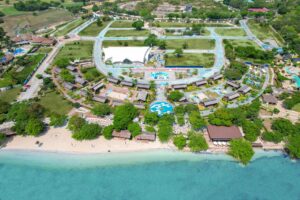A strategic plan for the IT-BPM industry

(Part 1)
After the OFW (overseas Filipino workers) sector, the IT-BPM (Information Technology-Business Process Management) industry is the second largest service-oriented engine of growth of the Philippine economy.
Not only does it have a direct contribution to Philippine GDP through the average annual earnings of $23 billion–$25 billion of the approximately 1.4 million workers in the sector, there are the many multiplier effects on real estate, education, food establishments, public utilities, and leisure and recreation centers, among others.
Because of the unique demographic dividend that the Philippines is still enjoying amid a rapidly aging First World (including some emerging markets whose fertility declines have come prematurely), one can assume that this sector will continue to be a major source of GDP growth and employment for the Philippine economy for many years to come.
The young, growing and English-speaking population of the Philippines gives it, together with India, a competitive advantage in providing the human resources for the global IT-BPM sourcing market. Total revenues of the Philippines’ IT-IBM sector in 2021 during the height of the pandemic still reached a hefty $29 billion, employing 1.4 million.
In this series of articles, we shall present a preliminary version of the strategic plan that the IT & Business Process Association of the Philippine (IBPAP) is in the process of formulating for their sector in the coming decade or so after the pandemic.
We shall first present a summary of the document entitled “Accelerate PH (Future Ready) Roadmap 2022” that was prepared by the association in collaboration with Frost & Sullivan in 2015.
The purpose of this quick review of this data-filled study is to serve as part of the SWOT analysis that is essential to any strategic planning process. We shall draw from this Roadmap the key strengths of the Philippine IT-BPM sector and the opportunities that it faces in the coming decade or so.
The pandemic of 2020 to 2022 has hardly slowed down the growth of the global IT-IBM sourcing sector that in 2015 was projected to grow to $249.4 billion by 2022, with IT Services accounting for $147.3 billion and BPM for $102.1 billion.
The overall IT services global market was expected to remain larger than the BPM market as companies seek to outsource their IT services in their quest towards becoming leaner and more productive.
The global IT Services sourcing market was expected to grow from the 2015 to 2022 period at a compounded annual growth rate (CAGR) of 5.8%.
As a sign of the resilience of the Philippine IT-BPM sector, despite the slowdown occasioned by the pandemic in 2020, the sector started to grow at more than 5% annually in 2021 and is expected to grow even at a higher rate in 2022.
It is interesting to note that the post-pandemic world will be dominated by the Indo-Pacific region which is expected to lead in economic recovery, especially the three large economies of China, India and the ASEAN Economic Community, to which the Philippines belongs.
This will reinforce the trend that already existed before the pandemic as regards the demand for IT-BPM services. The Asia-Pacific region was already contributing 73% of the overall global headcount in this sector, with the two largest IT-BPM destinations — India and the Philippines — located in this region.
This dominance of the Asia-Pacific region will even be reinforced by the trade agreement called the Regional Comprehensive Economic Partnership (RCEP) that came into force on Jan. 1 after having been approved by Brunei, Cambodia, Laos, Thailand, Vietnam, Australia, China, Japan, New Zealand, and South Korea.
Although President Duterte already gave his approval to RCEP, the concurrence of the Senate is still being awaited. Some delay is expected because of strong objections, especially coming from the agricultural sector due to fears that the trade agreement will seriously hurt the small farmers.
Despite some delay, however, the RCEP will significantly benefit the IT-BPM industry. According to the Asian Development Bank (ADB), digital services trade in the Asia-Pacific region has grown faster in the last 15 years compared to other parts of the world. Among the 15 countries that will eventually be part of RCEP, the Philippines has the greatest competitive advantages in digital services trade.
Prior to the pandemic, there was already a very discernable increased attractiveness of what are referred to as Tier II and Tier III locations, cities which are outside the metropolitan areas like Manila or Cebu.
As the Frost and Sullivan report indicated, Tier I cities were becoming too overcrowded and too expensive to operate with multiple suppliers sourcing for the same talent pool.
The untapped talent pools in emerging locations, decentralizing strategies by governments to develop other areas, and infrastructure improvements (like the Build, Build, Build program of the Duterte Administration) in newer locations were becoming increasingly attractive to IT-IBM providers.
One can predict that after 2022, there will be more locators of IT-BPM providers in such emerging Tier II and Tier III regions as Calabarzon (Cavite, Laguna, Batangas, Rizal, and Quezon), Central Luzon (especially the so-called Pampanga Triangle of Angeles City, San Fernando, and Clark-Subic), Western Visayas (the Iloilo-Bacolod tandem, two cities that will be connected by a bridge passing through Guimaras), and Davao and Cagayan de Oro in Mindanao.
There are actually already Tier III cities like Puerto Princesa in Palawan, Dumaguete in Negros Oriental, and Antique and Capiz in Panay, and Naga in Camarines Sur.
The study also enumerated the competitive advantages of some of the leading destinations of IT-BPM outsourcing services. The Philippines is together with India as the leaders in global competitiveness; with China and Mexico considered as global alternatives; and Chile, Brazil, and Poland as developing global destinations.
In Southeast Asia, other weaker alternatives are Thailand, Indonesia, and Malaysia. Our major competitor is India, which is neck-and-neck with us in attracting contact centers, IT outsourcing, and non-voice BPM.
The strengths of the Philippines in the IT-BPM sector are as follows: 1) The number one service provider in the global voice BPM market, followed by India (in fact, Indian IT-BPM enterprises are locating some of their operations in the Philippines); 2) Traditionally serving the contact center market, particularly the United States. The country, however, is beginning to focus on growing IT and non-voice BPM services as part of its national strategy rather than remain just as a contact center destination. As Artificial Intelligence (AI) and robotics are increasingly applied to this industry, customer services will be increasingly automated or robotized. There is need to shift to more knowledge-and skilled-based services; 3) The Philippines has a large pool of English-speaking IT and accounting graduates; and 4) Filipinos are in demand because of their high service standards, highly developed soft skills inherent to Filipino culture and familiarity with and affinity to Western culture (especially North American culture).
Probing deeper into country attractiveness, the study utilized a broad range of global benchmarking parameters covering multiple areas such as business costs, regulations, infrastructure, and education to assess the overall attractiveness of each country as an IT-BPM destination.
In summary, India and the Philippines as global IT-BPM leaders excel, or at the very least score reasonably well, in areas pertaining to business costs and education. Both countries, however, show ample room for improvements in areas relating to infrastructure capabilities.
From a cost of doing business perspective, parameters commonly benchmarked in the selection of an IT-BPM location include labor and building costs, infrastructure and connectivity, as well as inflation and tax related expenditures.
(To be continued.)
Bernardo M. Villegas has a Ph.D. in Economics from Harvard, is professor emeritus at the University of Asia and the Pacific, and a visiting professor at the IESE Business School in Barcelona, Spain. He was a member of the 1986 Constitutional Commission.




